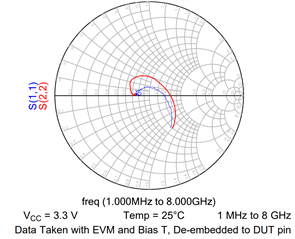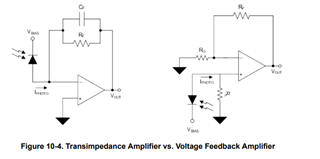Other Parts Discussed in Thread: OPA3S2859, OPA855, OPA858
Hello,
I am looking to use this RF gain block as the first stage in a photodetector application. I was wondering if there is a real resistor to ground from the RF input? My understanding is that this is a SiGe darlington amplifier and so I would expect there to be one but I want to confirm and be able to take measurements to confirm.



